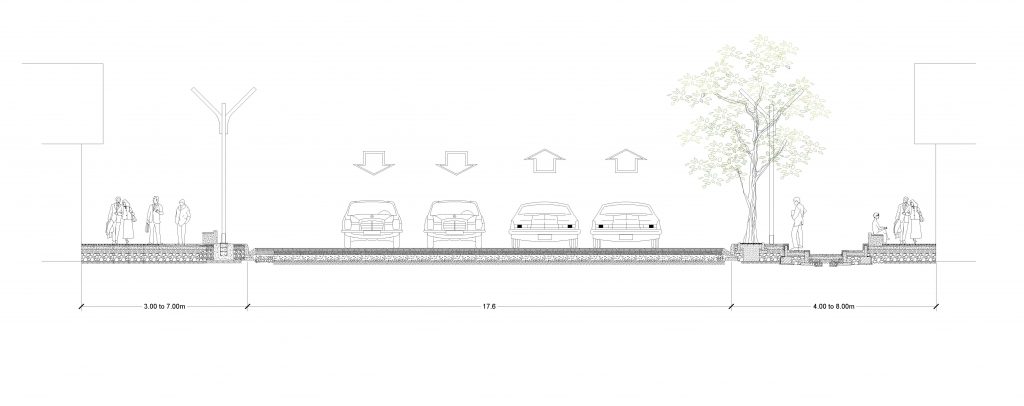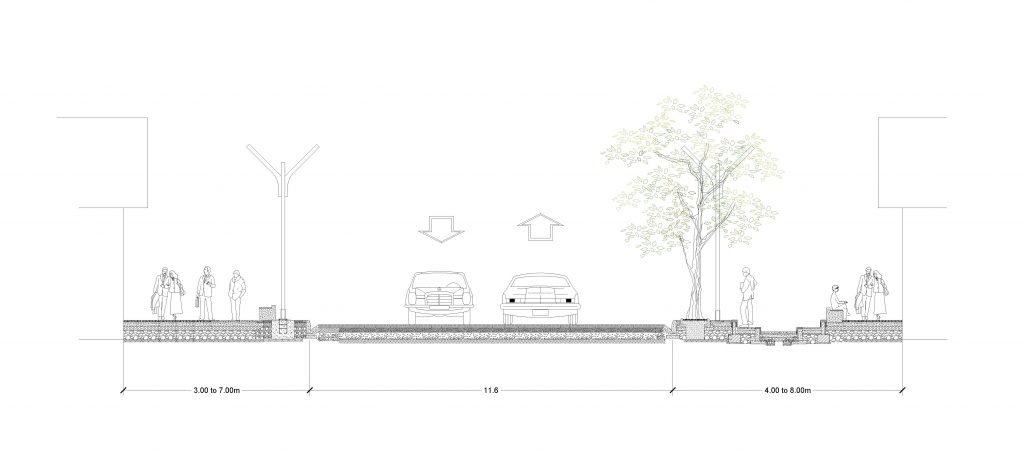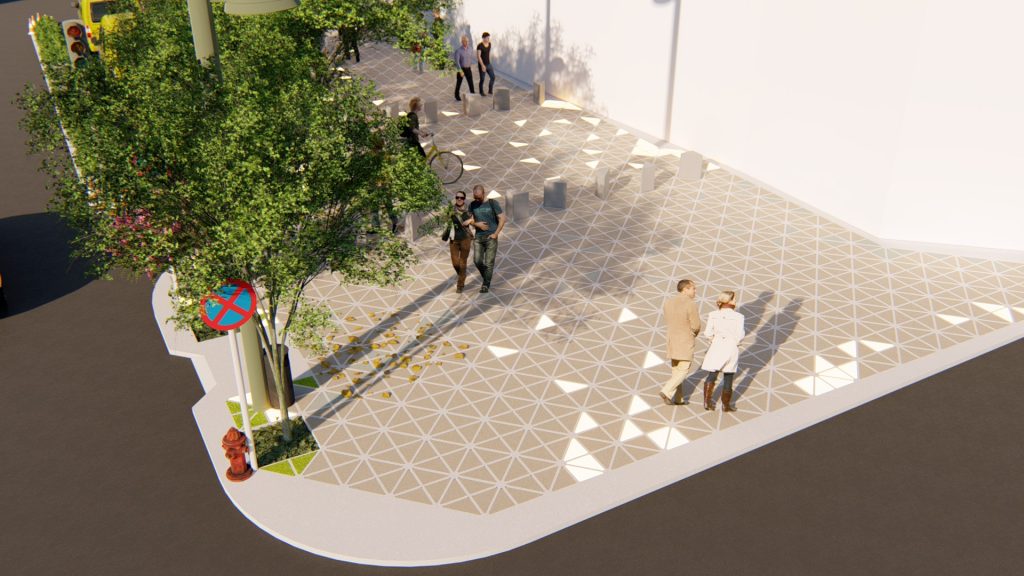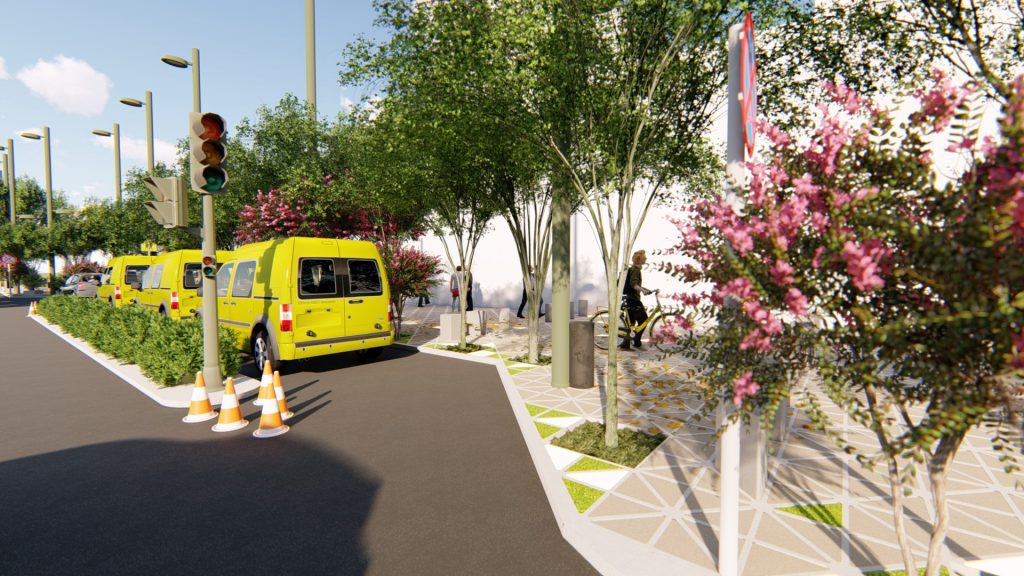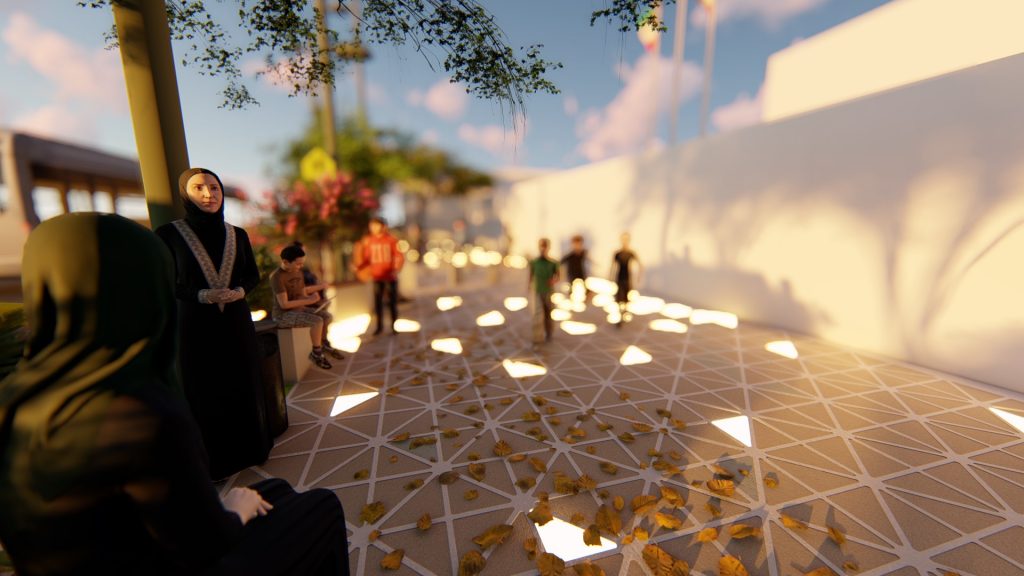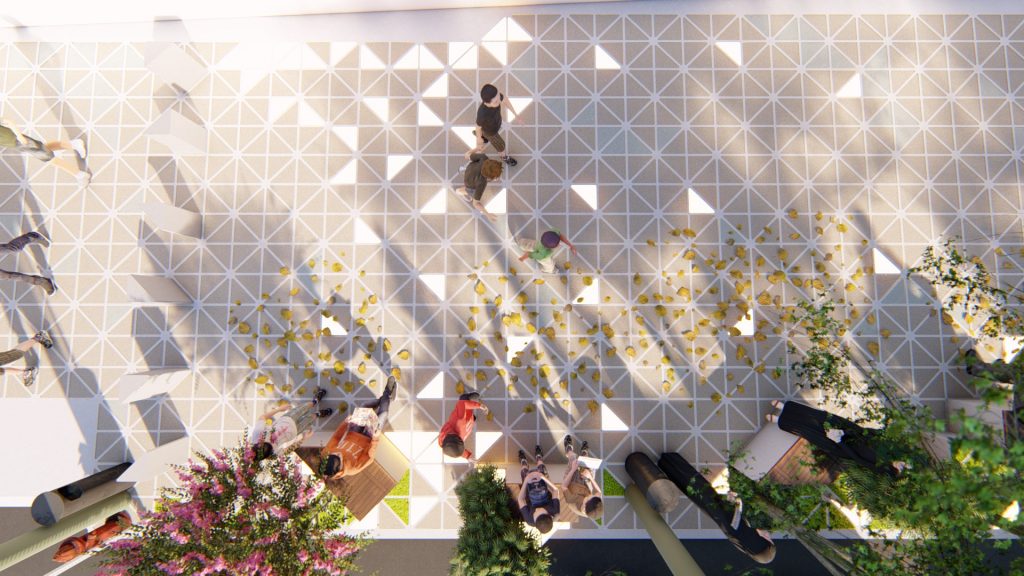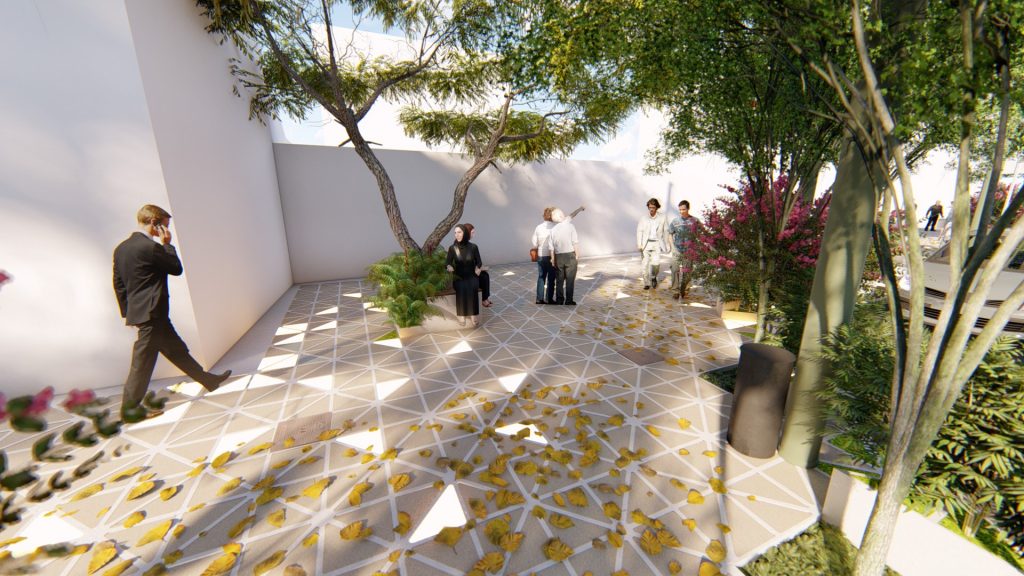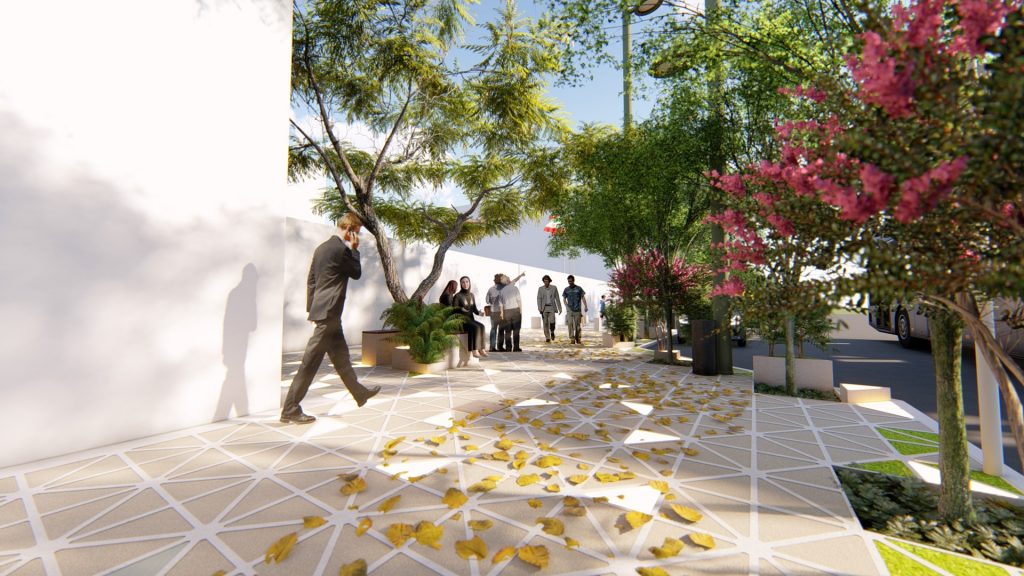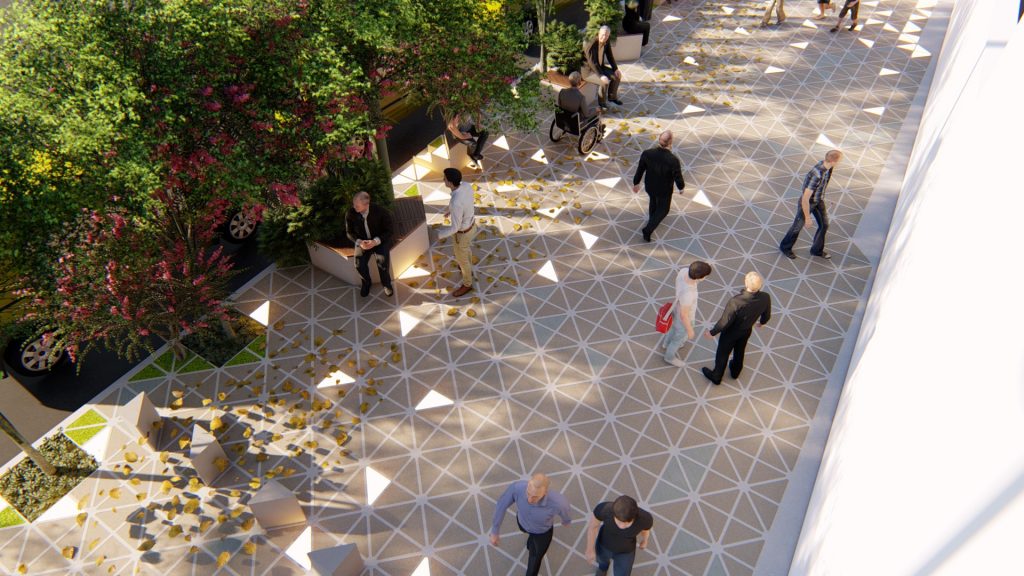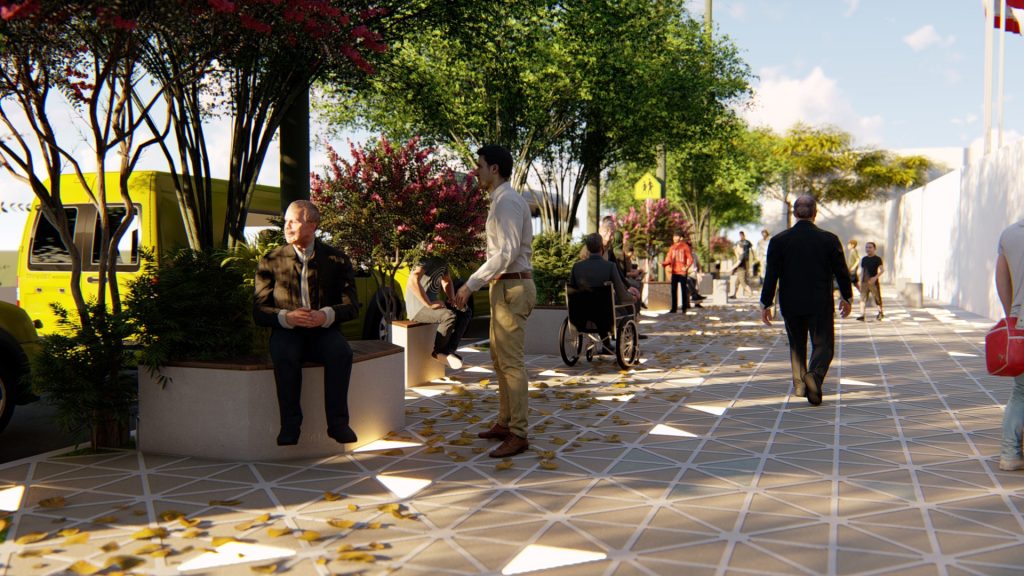Madani Street
Leveraging Generative Design for Urban Space Enhancement: A Case Study on Madani Street
In urban design, balancing vehicle traffic and pedestrian space is critical to fostering vibrant, livable cities. In the Madani Street Improvement Project, we set out to achieve just that—by reducing vehicular space and expanding pedestrian areas. While the traffic team focused on vehicular design, our team concentrated on reimagining the pedestrian experience and the urban edge along Madani Street.
The Role of Generative Design in Urban Spaces
Generative design, rooted in computational algorithms and parametric design principles, allows designers to explore a vast array of design possibilities by setting parameters that align with urban needs. This method is particularly valuable in urban design, where spatial relationships and functional proximities play a significant role.
In this project, we utilized an attraction algorithm to create an underlying diagrammatic layer that informed the design process. This algorithm determined the spatial needs of various urban functions based on their proximity to key areas, ensuring a cohesive and well-integrated urban environment. For example:
>>Ice Cream Shop:
High-priority seating areas
High-priority nighttime lighting
Medium-priority green spaces for shading
High-priority access to the shopfront
>>Bank:
Low-priority seating areas
Medium-priority nighttime lighting
Medium-priority green spaces
High-priority access to the bank facade
These layers were defined and calculated within the algorithm, resulting in a foundational diagram where the size of circles represented the importance of each spatial element. Larger circles indicated higher importance, guiding the design process toward creating functional and user-friendly urban spaces.
By integrating generative design with parametric tools, we not only analyzed urban spaces more effectively but also tailored the sidewalk design to interact constructively with surrounding functions. This approach significantly improved the quality of life and the urban experience for pedestrians, making the space more inviting and dynamic.
Generative design and parametric architecture represent the future of urban space planning. They provide a framework that simplifies the complex task of analyzing and designing urban spaces, allowing designers to focus more on creating environments that enhance the human experience.
> My experiences in this and other projects have deepened my expertise in generative design and parametric architecture, enabling me to contribute meaningfully to the evolution of urban spaces.

